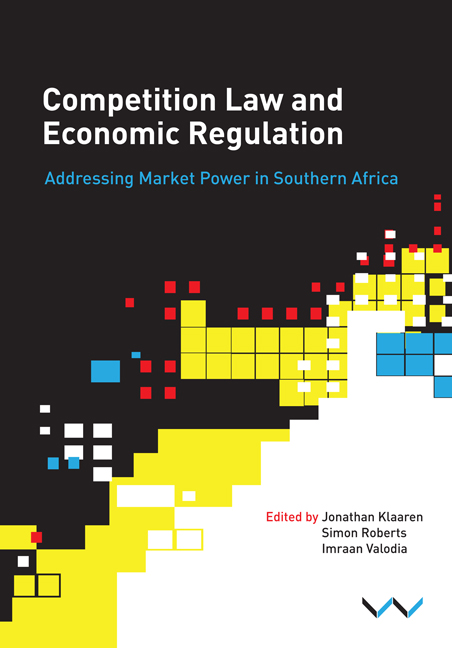 Competition Law and Economic Regulation in Southern Africa
Competition Law and Economic Regulation in Southern Africa Book contents
- Frontmatter
- Contents
- Tables, figures and boxes
- Acknowledgements
- Acronyms and abbreviations
- Introduction: The development of competition and regulation in southern Africa
- Part One Cartel law enforcement
- Part Two Issues in competition and regulation
- Part Three Competition and regulation in reshaping African markets
- 6 How multinational investments in grain trading are reshaping Zambia's market
- 7 Competition and incumbency in South Africa's liquid fuel value chain
- 8 South Africa's renewable energy experience: Inclusive growth lessons
- 9 Competition and regulation in Zimbabwe's emerging mobile payments markets
- 10 Evaluating the competitiveness of Zimbabwe's poultry industry
- Part Four Conclusion
- Contributors
- Index
10 - Evaluating the competitiveness of Zimbabwe's poultry industry
from Part Three - Competition and regulation in reshaping African markets
Published online by Cambridge University Press: 23 March 2018
- Frontmatter
- Contents
- Tables, figures and boxes
- Acknowledgements
- Acronyms and abbreviations
- Introduction: The development of competition and regulation in southern Africa
- Part One Cartel law enforcement
- Part Two Issues in competition and regulation
- Part Three Competition and regulation in reshaping African markets
- 6 How multinational investments in grain trading are reshaping Zambia's market
- 7 Competition and incumbency in South Africa's liquid fuel value chain
- 8 South Africa's renewable energy experience: Inclusive growth lessons
- 9 Competition and regulation in Zimbabwe's emerging mobile payments markets
- 10 Evaluating the competitiveness of Zimbabwe's poultry industry
- Part Four Conclusion
- Contributors
- Index
Summary
INTRODUCTION
This chapter analyses the competitiveness and performance of the Zimbabwean poultry industry in the context of trade liberalisation, given that both poultry output and the main inputs (animal feed and breeding stock) are tradeable. Poultry is an important product in Zimbabwe as the main source of protein for consumers. It also has strong links to agriculture through the production of animal feed. The Food and Agriculture Organisation (FAO, 2010) notes the rapid growth of the poultry sector globally over the last decade. Despite the rise in chicken demand over the years as a cheap source of protein, the poultry industry in Zimbabwe still faces a number of challenges, which the government claims include stiff competition from cheap imports, rising input costs of maize and soya meal and illegal imports being sold at subeconomic prices (Government of Zimbabwe, 2012). This chapter evaluates these factors and the impact of changing trade protection.
Performance of the poultry industry has been affected by trade liberalisation, which started in 1991 following the adoption of the Economic Structural Adjustment Programme (ESAP), in line with most developing countries, as part of the Washington Consensus policies (Tekere, 2001). However, Zimbabwe maintained a trade surplus in poultry until a deficit started in 2008, due to increasing chicken imports over the previous decade, which reached a peak of US$29 million in 2009. Understanding the reasons for this performance requires evaluating the factors affecting both inputs and outputs, of which protection is one. The concept of effective rate of protection (ERP) is used to assess the impact of changing tariffs. Non-tariff barriers and agricultural policies are also considered, such as the ban on imports of genetically modified (GM) maize, and the ban on poultry imports from South Africa from March 2010 until December 2011 due to an outbreak of Rift Valley fever (RVF). The impact of growth in regional sources of maize (from Zambia) is also taken into account, given the lower transport costs from Zambia. In the 2013 budget statement, the government intervened to protect the poultry industry once again and increased tariffs on chicken to the current rate of 40% or $1.50/kg (Government of Zimbabwe, 2012).
- Type
- Chapter
- Information
- Competition Law and Economic Regulation in Southern AfricaAddressing Market Power in Southern Africa, pp. 234 - 260Publisher: Wits University PressPrint publication year: 2017


